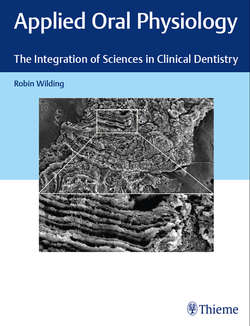Читать книгу Applied Oral Physiology - Robin Wilding - Страница 23
На сайте Литреса книга снята с продажи.
2.2.7 The Pulp Chamber and Root Canal
ОглавлениеThe pulp chamber is largest in the deciduous tooth, so the pulp is rapidly reached by advancing caries. It is also readily exposed during cavity preparation for a restoration, particularly if the operator is determined to remove all softened dentin.
In the permanent tooth, the pulp chamber is largest when the tooth has just been formed, that is before any secondary dentin has been laid down.
Pulp chambers generally follow the shape of the tooth crown. It would be more accurate to say that during tooth formation, the crown shape follows that of the pulp chamber. Thus, the pulp chamber is fan shaped in the incisor teeth, being flattened in a labial–lingual direction. In the canines it is flame shaped, and in the premolars and molar teeth the pulp chamber has peaks, known as horns, which lie under each tooth cusp (▶ Fig. 2.13).
Fig. 2.13 A maxillary second premolar, sectioned down its long axis in a buccal–lingual plane. The shape of the pulp chamber follows that of the tooth crown, with a pulp horn under each cusp. The pulp chamber is flattened mesiodistally.
During tooth wear, and aging, it is in these pulp horns that the first secondary dentin appears. In the floor of the pulp chamber, narrow canals lead along the center of each root. So, there are at least as many canals as there are roots and sometimes more. For example, the mesial root of the mandibular first molar is a fusion of two roots. This root, which appears to be single, actually has two root canals, one buccal and the other lingual. A buccal and a lingual canal should also be expected in the maxillary second premolar, even though this root may be appearing to be single. There are other examples of additional canals. The endodontist needs to be familiar with them all.
In the developing root, the root canals are quite wide and funnel shaped at the apex (▶ Fig. 2.14). The apical foramen of the root becomes progressively narrower as the root forms. As we have noted, sometimes there are extra accessory canals in the root, which are difficult to locate, clean out, and fill during endodontic procedures. The apex of the root may also have accessory canals, forming a sort of delta of canals emerging from the root. The apex of the tooth becomes surrounded by cementum, which continues to form throughout life. It may not be obvious exactly where the apex is when examining a periapical radiograph because of this cementum, and accessory canals may not be visible (▶ Fig. 2.15).
Fig. 2.14 The partially formed root of an unerupted third molar. The root apices do not close until the roots are fully formed.
Fig. 2.15 An SEM image of the apex of a fully formed root shows a number of accessory canals. (Magnification × 100). The main apical foramen is not quite at the apex of the tooth but emerges to one side of it. In this example, it is on the left, slightly hidden by an overhang of cementum.
Key Notes
Cavity preparation opens thousands of dentinal tubules. As the preparation approaches the dental pulp, the tubules become wider and the fluid flow in response to mechanical, thermal, or chemical irritation increases. Conservative cavity preparations reduce pulpal irritation and postoperative pain.
